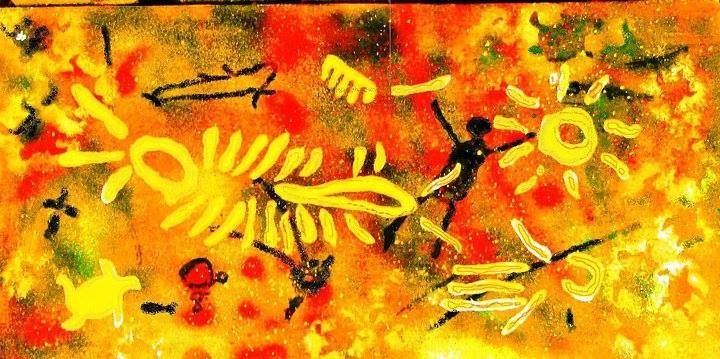Let’s journey back thousands of years—before high-rises, resorts, or even written records—to a wild and untouched Aruba, blanketed with kwihi trees, exotic birds, and freshwater turtle-filled pools. While the Caiquetio Indians are widely accepted as Aruba’s earliest settlers, archaeological evidence suggests the island may have had even earlier visitors—prehistoric nomads we now refer to as the Paleo Indians.
👣 The Paleos: Aruba’s Original Nomads
In 1989, an archaeological dig near Malmok revealed burial sites significantly different from those attributed to the Caiquetio. The bone structure, burial positions, and age of associated shells suggest a far more ancient group of people—possibly Aruba’s first true tourists.
These Paleo Indians, who lived between 40,000 to 10,000 years ago, were nomadic hunter-gatherers from the last Ice Age. Unlike the Caiquetio, they left little behind, making it difficult to piece together their story. But from primitive tools like scrapers and arrowheads, we know they once roamed the Caribbean basin, likely tracking megafauna like the woolly mammoth.
🌍 How Did They Reach Aruba?
Thirty thousand years ago, sea levels were lower, and it’s plausible that Aruba was either connected to or closer to South America by land or shallow water. The Paleos may have:
-
Walked from the mainland to forage and fish, returning before colder seasons
-
Or canoed over a calmer, smaller Caribbean Sea
Either way, their visits were likely seasonal, making them the first vacationers to fall in love with Aruba’s natural beauty.
📜 The Malmok Discovery & the ‘Malmokers’
During the 1989 expedition, archaeologists uncovered bodies in patriarchal burial positions, alongside seashells thousands of years older than the skeletons themselves. Aruba’s own history enthusiast, Anthony Croes of Etnia Nativa, affectionately refers to these ancient visitors as the “Malmokers”. Visit him and hear these fascinating theories firsthand—he might just change how you see Aruba’s history.
🛶 The Caiquetio: Aruba’s First Full-Time Residents
While the Paleos may have visited, the Caiquetio Indians were the first to settle permanently. A branch of the Arawak people, they likely fled Venezuela to escape conquest by the Caribs. Crossing a rough, open sea in hand-carved canoes, they brought with them tools, traditions, and the foundation of Aruban culture.
Remnants of their settlements have been found in Canashito, Malmok, Savaneta, Santa Cruz, and Tanki Flip. These early Arubans:
-
Fished, hunted, and gathered for sustenance
-
Buried their dead in ritualistic ways
-
Created cave drawings that still survive today
🧭 A Legacy Etched in the Land
The Caiquetio left enough behind—tools, burial sites, petroglyphs—to give us a glimpse into their peaceful and resilient way of life. And while we may never fully understand the mysterious Paleo visitors, their presence reminds us that Aruba’s story began long before modern civilization arrived.
📚 Continue Your Journey Through Aruba’s History:
The sands of Aruba may shift with time, but its stories remain—waiting to be uncovered. 🌅
Photo credits : https://www.visitaruba.com/blog/about-aruba/arubas-first-tourists/

























Discussion about this post